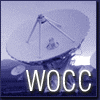 s the 20th century gives way to the 21st, wireless and optical communication systems and technologies have
entered a vital new phase. Business globalization, e-commerce, remote education/learning, Internet usuage, virtual work place, and
increasing mobility are creating unprecedented voice and data traffic on both public and private networks today. New services provided
by the next generation systems will generate even more traffic, which will require technologial innovations to overcome barriers in all
fronts. Wireless and optical communications are playing two important roles in this new infomation technology era: wireless in access
and optical in trunking. Together, they can deliver the ever-increasing bandwidth demands. s the 20th century gives way to the 21st, wireless and optical communication systems and technologies have
entered a vital new phase. Business globalization, e-commerce, remote education/learning, Internet usuage, virtual work place, and
increasing mobility are creating unprecedented voice and data traffic on both public and private networks today. New services provided
by the next generation systems will generate even more traffic, which will require technologial innovations to overcome barriers in all
fronts. Wireless and optical communications are playing two important roles in this new infomation technology era: wireless in access
and optical in trunking. Together, they can deliver the ever-increasing bandwidth demands.
The on-going deployment of second generation digital wireless networks and the never-ending subscribers growth
rate are continuously reaching new heights, despite the economic crisis in the Asia Pacific region and the emerging markets.
Deregulation and privatization are continuously spreading among developed and developing countries. At the same time, with the rapid
deployment of WDM systems, the bandwidth per fiber has increased by nearly two orders of magnitude! - new WDM systems are offering "128"
or more wavelengths per fiber at OC-48 and OC-192 rates or higher. Bothe wireless and optical communications are playing ever more important
roles in everyday communcations around the globe.
The prevailing wind of providing bandwidth-on-demand in a data-centric network offered by many traditional and new
entrant telecommunication carriers and the Next Generation Internet (NGI) program kicked off this year by DARPA have generated exciting and
forward-looking R&D opportunities. In 1998, Optical Internetworking Forum (OIF) has gathered momentum and more than 100 paid members have
participated including major telecommunications equipment and component suppliers, and carriers to investigate pressing issues and reach
consensus on the physical interfaces, functions and features, and operation requirements of high speed routers and high capacity WDM network
elements. The revolution of combining circuit switched telephony network and packet switched data network into one seamless network of the future
is aimed at providing bandwidth-on-demand and high QoS for future NGI users. Applications like Gb/s bandwidth to the desktop and large block
of burst data transfer between users of NGI networks can be realized in the near future.
The third generation innovative wireless evolution is just around the cornet and is taking place on three major fronts:
Asia Pacific, Europe, and North America. The vision of creating a "family of systems" is to evolve all the world's second-generation systems -
including CDMA, TDMA, and GSM - to comply with a common set of requirements. The general goals include the integration of residential,
office, and cellular/PCS services into a single, seamless service with multimedia capability. It will not only enable users to connect and
communicate with the rest of the world; any time, and where, and in any form; but also allow wireless communications to be even more competitive
with wireline communications in terms of costs and services. Many attendees of this conference have been taking a prominent role in defining
this standard which is set to laaunch worldwide shortly after the new millennium.
This conference is reaching a new height to add value and accelerate growth in promoting innovations and advancing the
technological evolution for the next generation wireless and optical systems and technologies. |

